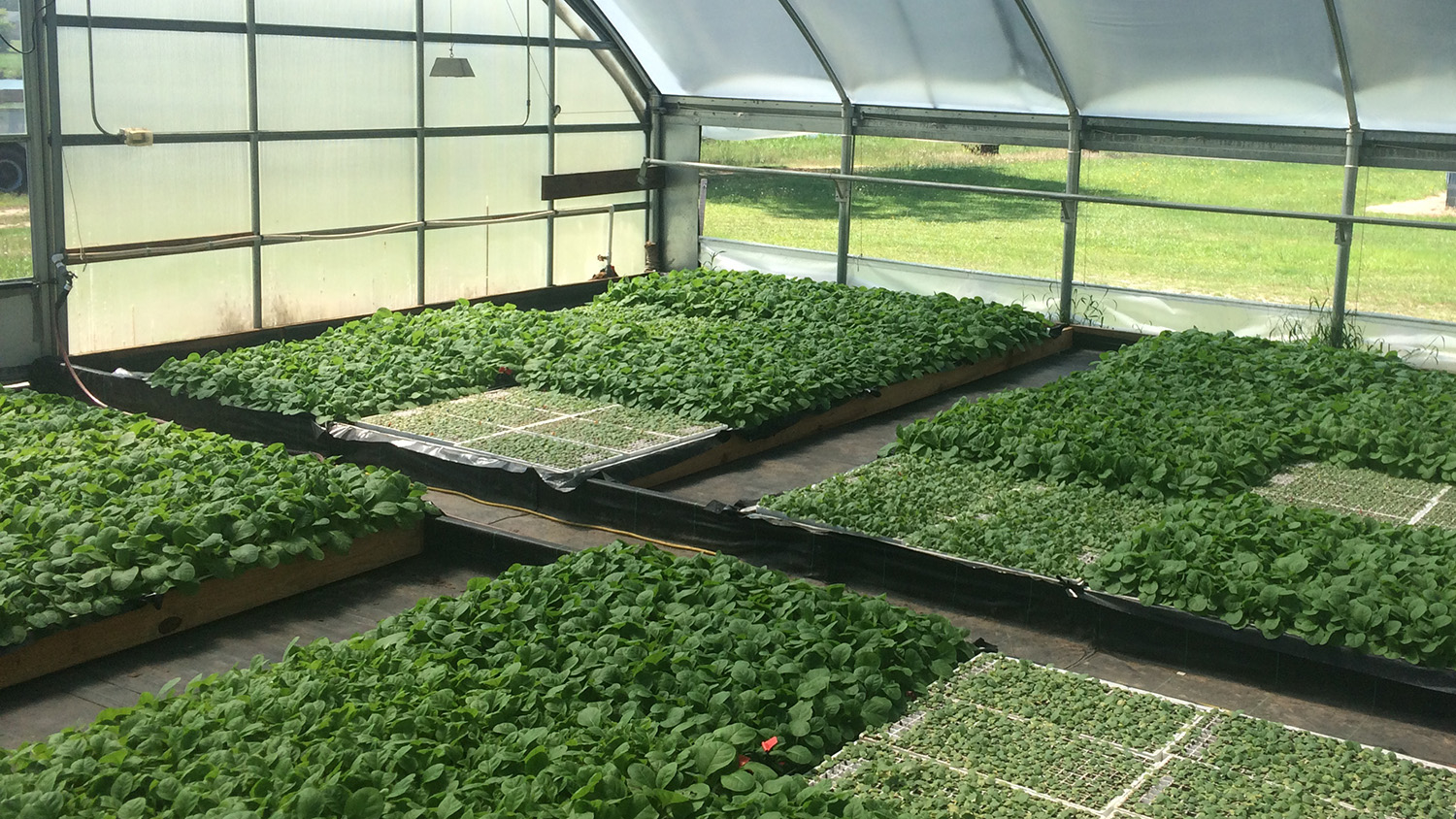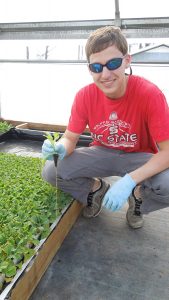Organic Tobacco: Better Ways to Get Off to a Good Start

Interest in organic tobacco farming has been growing in recent years, and at NC State University, researchers are taking the guessing game out of one of the most important steps in production: how best to fertilize seedlings.
Seedlings are usually grown in greenhouses in trays that float in water, but some growers were having problems producing organic seedlings healthy enough to transplant into fields, explained Dr. Matthew Vann, an NC State Extension tobacco specialist and assistant professor in the Department of Crop and Soil Sciences.
To develop recommendations for growers, Vann and master’s student Hunter Mason conducted two studies. One involved aerating the float beds with fish-tank pumps, and the other tested seven different fertilizer protocols.
They found that by using a combination of seabird guano, sodium nitrate and gypsum and by using fish-tank pumps to aerate the float beds, they could achieve levels of seedling success comparable to those seen in conventional tobacco production with synthetic fertilizers.

“A lot of organic growers have the perception that they don’t have a lot of options when it comes to fertilizing seedlings,” said Mason, who will graduate this May. “They have a lot of questions, and this research provides some answers for them. We’ve taken some of the guessing out for them. Now they will know exactly what they need.”
“Aeration made a huge difference,” Vann said. That’s because nitrogen from animal manures doesn’t dissolve into a form that plants can use as easily as the nitrogen in conventional fertilizers do. “With aeration, the nitrogen is available to the plants a bit earlier in the season,” he added.
“We also found that it really took an integrated approach to develop a fertilizer program that met all the nutritional needs for the seedlings,” Vann said. Guano, for example, isn’t a good source of calcium, but gypsum is. And sodium nitrate doesn’t have the phosphorus that seabird guano has.
Vann and Mason have developed recipes for the blended regimen they recommend, and they said that details will be made available next winter in the annual tobacco production guide published by NC State.
“From these studies, we learned a lot about the water chemistry that organic growers have to deal with that conventional growers don’t,” Vann said. “Because our seabird guano was a slow release material, we have to think about managing it a little bit different than sodium nitrate and conventional 16-5-16 fertilizer, but in the end it can be done successfully and on a large scale.”
This post was originally published in College of Agriculture and Life Sciences News.
- Categories:


